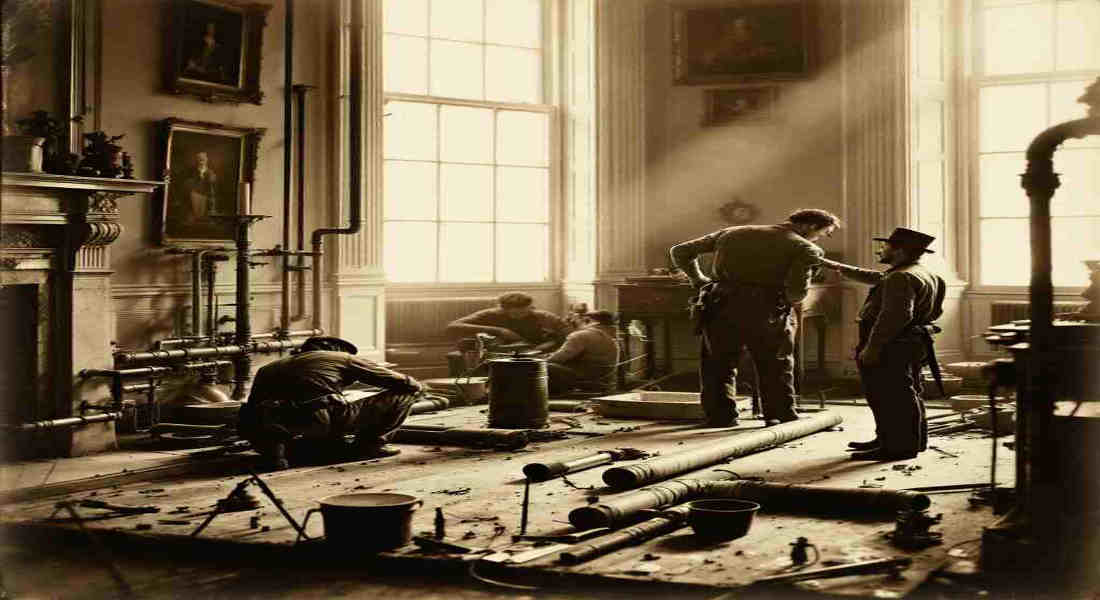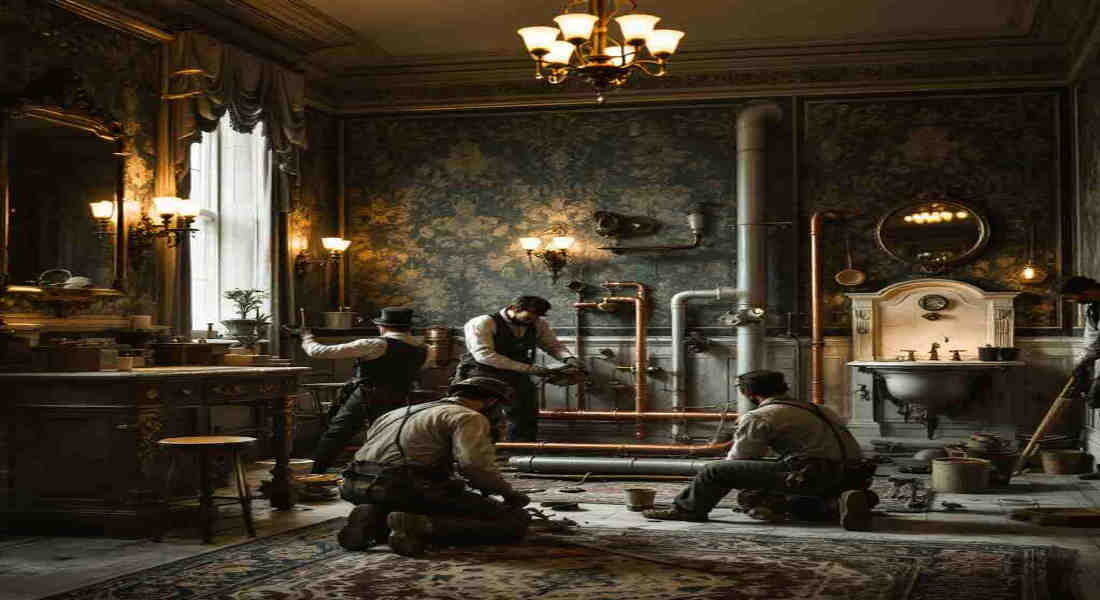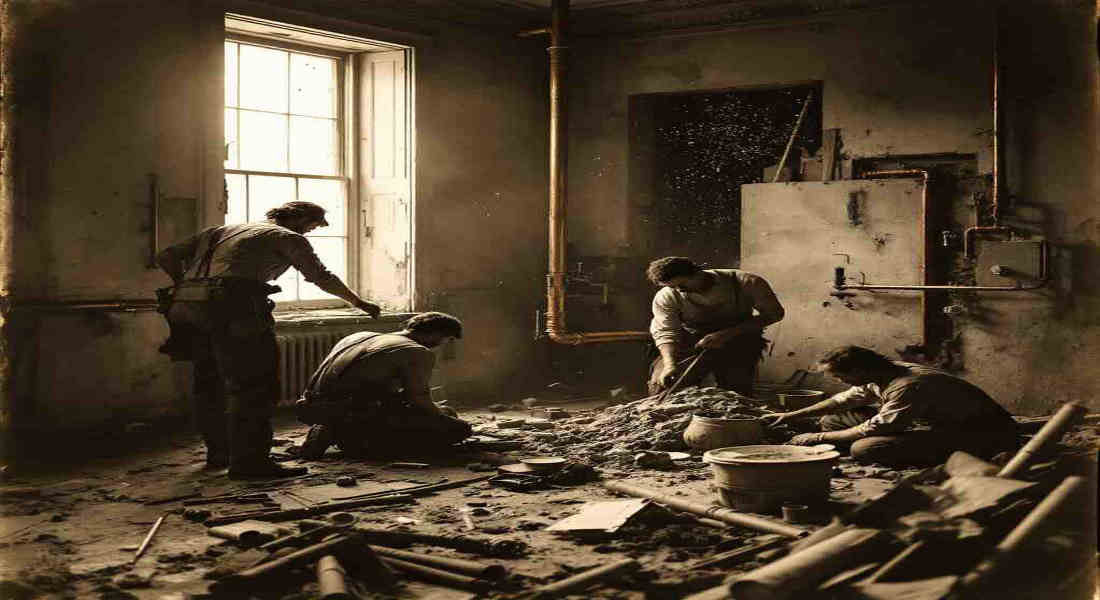The White House stands as one of the most iconic symbols of American history—a blend of political power, architectural grandeur, and cultural significance. As the official residence of every U.S. president since 1800, it has witnessed the evolution of technology and infrastructure over the centuries. Among these advancements, the introduction of indoor plumbing marks a significant milestone.
Plumbing may not sound as glamorous as the Oval Office or the East Room, but it has played a crucial role in transforming the White House into a habitable and functional home. The evolution of water systems, from rudimentary outdoor pumps to modern temperature-regulated showers, reflects broader changes in technology, society, and comfort.
Early Water Systems at the White House
Before we discuss when the White House got indoor plumbing, let’s take a step back to its earliest years. The White House was completed in 1800, but at the time, the concept of indoor plumbing was virtually nonexistent. Instead, water was accessed through outdoor systems that were labour-intensive and rudimentary.
The First Use of Running Water
The first significant development in the White House’s water system occurred under President John Quincy Adams in the late 1820s. Adams, who was an avid gardener, installed a pump system to bring water to the White House gardens. This system included hoses and pumps to irrigate the lawns and flower beds.
While this was a step forward, it wasn’t indoor plumbing. Water still had to be manually transported inside the residence for cooking, cleaning, and other personal uses. The lack of indoor facilities meant that the White House staff and residents relied on chamber pots and outdoor privies, which were far from convenient.
Limitations of Early Systems
Despite the introduction of outdoor water systems, life in the White House remained challenging. The absence of indoor plumbing meant that water for bathing, drinking, and cooking had to be carried inside manually. This labour-intensive process continued until the mid-19th Century, when technological advancements began to change the game.
The Arrival of Indoor Plumbing in the White House
So, when did the White House get indoor plumbing? The answer dates back to 1833, during the presidency of Andrew Jackson.
You may also read (plumbing pipes at home).
The Milestone Year: 1833
In 1833, President Jackson oversaw the installation of iron pipes in the East Wing of the White House. This marked the first step toward having an indoor plumbing system. Along with the pipes, a bathing room was created, which included a simple tub and basic water taps. Although primitive by today’s standards, this setup was a significant leap forward for the time.
What Did Early Indoor Plumbing Include?
The indoor plumbing installed in 1833 was minimal in certain areas of the White House. The East Wing bathing room allowed for basic hygiene, but hot water was not yet available. Additionally, most of the White House still relied on older methods for water access. Nevertheless, this milestone set the stage for further advancements in the decades to come.
Advancements in White House Plumbing by the Mid-19th Century
By the mid-19th Century, the White House’s plumbing system had evolved significantly. Presidents recognised the importance of modernising the residence to keep up with technological advancements and provide greater comfort for both the first family and their staff.
Central Plumbing on the Second Floor
In 1853, under the presidency of Millard Fillmore, central plumbing was installed on the Second Floor of the White House. This included both hot and cold water taps, making it much easier for residents to access water without the need for manual labour.
The First Flushing Toilet
Another major milestone came during the same year when the White House received its first flushing toilet. This innovation, introduced under Fillmore’s administration, dramatically improved sanitation and convenience.
Contributions of Franklin Pierce
President Franklin Pierce, who succeeded Fillmore, further enhanced the White House’s plumbing system by establishing a more modern bathroom setup. These updates reflected a growing understanding of hygiene and comfort, which were becoming increasingly important in American households.
Unique Plumbing Features and Anecdotes
The White House’s plumbing history is full of unique stories and quirky anecdotes. Let’s take a closer look at some of the most interesting examples.
James Madison’s Early Bathtub Experiments
In 1814, President James Madison attempted to introduce a makeshift bathtub to the White House. However, there was no indoor plumbing at the time, so the tub had to be filled with heated water hauled in buckets. Unfortunately, this early experiment was short-lived, as the White House was burned by the British during the War of 1812, destroying much of the residence.
William Howard Taft’s Oversized Bathtub
One of the most famous stories in White House plumbing history involves President William Howard Taft, who served from 1909 to 1913. Taft, known for his large stature, required a custom-made bathtub that could accommodate his size. The tub, which was seven feet long and three feet wide, became a legend in its own right and highlighted the importance of customised plumbing solutions in the White House.
Bathing in the Potomac River
Before indoor plumbing became widespread, early presidents like John Quincy Adams were known to bathe in the Potomac River. Adams famously enjoyed early morning swims, often using the river as a substitute for the nonexistent bathroom facilities in the White House.
Plumbing Challenges and Renovations in the 20th Century
By the 20th Century, the White House’s plumbing system had become outdated and required major renovations to meet modern standards.
You may also read (clean plumbing pipes at home).
The Truman Renovation
The most significant overhaul occurred during Harry Truman’s presidency in the mid-1900s. Truman recognised that the White House’s plumbing, along with its electrical and structural systems, was in dire need of repair.
Key Updates During Truman’s Renovation:
- Replacement of old, corroded pipes with modern plumbing systems.
- Install guest suite bathrooms to accommodate visitors.
- Introduction of temperature-regulated showerheads for added comfort.
The renovation was extensive and expensive, but it ensured that the White House could continue to function as both a residence and a workplace for the president.
The Watergate “Plumbers” – A Different Kind of Plumbing History
No discussion of White House plumbing would be complete without mentioning the Watergate “Plumbers”. While this group had nothing to do with actual plumbing, their name has become a part of American political history.
Who Were the Watergate Plumbers?
The “Plumbers” were a covert unit established during Richard Nixon’s presidency to prevent leaks of classified information. Their name was a tongue-in-cheek reference to their mission of “plugging leaks.”
Historical Significance
The activities of the Watergate Plumbers, including the infamous break-in at the Democratic National Committee headquarters, ultimately led to Nixon’s resignation. Though unrelated to water systems, the name serves as an ironic footnote in the history of White House plumbing.
How to Discover More About Historical Plumbing in Iconic Buildings
If you’re fascinated by the history of plumbing in the White House or other historic buildings, there are plenty of ways to dig deeper.
Research Tips
- Visit Archives and Historical Societies: These organisations often have detailed records about building infrastructure.
- Explore Official Websites: The White House Historical Association provides reliable information about the residence’s history.
- Conduct Keyword-Focused Searches: Use terms like “when did the White House get indoor plumbing” to uncover credible sources.
- Interview Experts: Historians and architects can provide unique insights into historical plumbing systems.
You may also read (mastering plumbing vent placement for your home).
